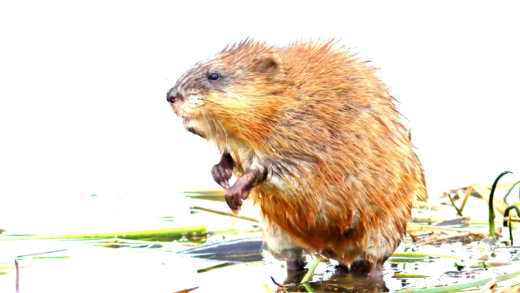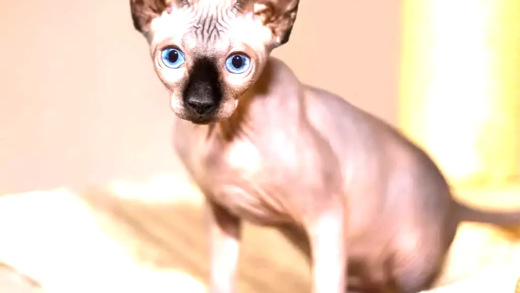This article explores the world’s smallest animals, detailing their habitats, roles in ecosystems, threats they face, and fascinating facts about their existence. Key highlights include the bumblebee bat, adaptations for survival, and the importance of tiny creatures in biodiversity.
Smallest Animal Revealed: Discovering the Tiny Champion
The smallest animal in the world is the bumblebee bat, also known as Kitti’s hog-nosed bat (Craseonycteris thonglongyai). This tiny creature weighs about 2 grams and has a wingspan of just 5.7 inches. Found primarily in parts of Thailand and Myanmar, this remarkable animal measures around 1.1 to 1.3 inches in body length. Its diminutive size makes it a true champion among the animal kingdom.
The bumblebee bat’s small stature is not just a curiosity; it plays a significant role in its ecosystem. By feeding on insects, it helps control pest populations, contributing to the health of its environment. Understanding the existence of such a small animal prompts deeper inquiries into biodiversity and the various adaptations that allow creatures to thrive in specific niches.
How Much Does It Weigh? Unpacking the Weight of the Smallest Animal
When discussing the weight of the smallest animal, the bumblebee bat again takes the spotlight, weighing in at about 2 grams. To put this in perspective, it is lighter than a penny! This featherweight status is crucial for its survival, allowing it to maneuver quickly through dense foliage in search of insects.
Scientists often measure the weight of small animals using precise scales designed for tiny specimens. The weight is significant as it can impact the animal’s metabolic rate, reproductive success, and overall survival. For example, smaller animals often require less food and can escape predators more easily, yet they face challenges like harsher environmental conditions and fewer resources.
In summary, the bumblebee bat exemplifies how weight plays an essential role in the lives of the smallest animals. Its lightness is not just a physical characteristic but a vital aspect of its survival strategy in the wild.
Meet the Miniature Marvels: Examples of Tiny Animals
When we talk about the smallest animals in the world, the bumblebee bat is just the tip of the iceberg. Here are some other fascinating tiny creatures that showcase the diversity of life on our planet:
- Bee Hummingbird: Weighing only about 1.6 grams, this bird is the smallest in the world. Found in Cuba, it measures approximately 2.2 inches long. Its iridescent feathers and rapid wing beats make it a stunning sight.
- Paedophryne amauensis: This tiny frog, discovered in Papua New Guinea, is just 7.7 mm long. It’s considered the smallest vertebrate on Earth. Its small size helps it avoid predators by hiding among leaf litter.
- Vampire Midge: At 2 mm in length, this insect is famous for its blood-sucking habits. Found in tropical regions, it’s a prime example of how even the tiniest creatures can have a big impact on their ecosystem.
- World’s Smallest Fish: The Paedocypris progenetica measures about 7.9 mm, making it one of the tiniest fish species. Found in the peat swamp forests of Indonesia, it lives in water that is often barely deep enough to cover it.
- Fairyfly: These wasps are about 0.5 mm long, making them one of the smallest known insects. They are parasitic, laying their eggs in other insects, showcasing an intriguing life cycle.
These examples highlight the incredible adaptations and survival strategies of tiny animals. Each of these miniature marvels plays a unique role in their ecosystems, proving that size is not always indicative of importance.
Survival Strategies: How Tiny Creatures Thrive in the Wild
Adaptations of the smallest animals are nothing short of remarkable. These creatures have developed various strategies to survive in a world that often seems dominated by larger species.
- Camouflage: Many tiny animals, like the Paedophryne amauensis, use their small size and coloration to blend into their surroundings. This helps them evade predators and hunt for food.
- Reproductive Strategies: Small animals often have high reproductive rates. For example, fairyflies can lay hundreds of eggs, ensuring that at least some offspring survive in a harsh environment.
- Rapid Movement: The ability to move quickly is crucial for small animals. The bee hummingbird flaps its wings at an astonishing rate, allowing it to evade predators and access food sources efficiently.
- Specialized Diets: Tiny creatures often have unique diets that allow them to thrive in specific niches. Vampire midges feed on the blood of larger animals, which provides them with essential nutrients.
- Microhabitats: Many small animals inhabit microhabitats that protect them from larger predators. For instance, tiny frogs often live in leaf litter, where they can hide from threats.
These adaptations demonstrate the ingenuity of nature. Tiny animals may be small, but their survival strategies are impressive, ensuring their place in the ecosystem.
Where to Spot Tiny Wonders: Natural Habitats of Small Animals
The smallest animals in the world can be found in various natural habitats, each uniquely suited to support their survival. Here are some key locations where you might encounter these miniature marvels:
- Tropical Rainforests: Home to a myriad of tiny creatures, rainforests are bustling with life. The Vampire Midge thrives in the humid environment, while the Paedophryne amauensis can be found hidden among leaf litter.
- Wetlands: The world’s smallest fish, Paedocypris progenetica, resides in peat swamp forests, where water levels are low, creating a unique microhabitat.
- Islands: The Bee Hummingbird is primarily found in Cuba, benefiting from the island’s diverse flora that supports its feeding habits.
- Gardens and Parks: Urban environments are not devoid of tiny animals. Many small insects and frogs can be spotted in gardens, making them accessible to curious observers.
- Meadows and Grasslands: These areas provide a habitat for various tiny insects, which play crucial roles in pollination and pest control.
Exploring these environments can lead to encounters with some of nature’s most fascinating and often overlooked species. Each habitat offers a glimpse into the intricate web of life that supports these small creatures.
The Unsung Heroes: Tiny Animals in Ecosystems
Tiny animals play a pivotal role in ecosystems, often acting as the unsung heroes of biodiversity. Their contributions include:
- Pollination: Many tiny insects, such as bees and butterflies, are crucial for pollinating plants, ensuring the reproduction of various species.
- Pest Control: Small predators help manage pest populations, preventing outbreaks that could harm larger species and crops.
- Soil Aeration: Creatures like tiny earthworms and insects contribute to soil health by aerating and enriching it, promoting plant growth.
- Food Source: Tiny animals serve as a food source for larger animals, creating a balanced food web essential for ecosystem stability.
The presence of these small creatures is vital for maintaining ecological balance. Their interactions with plants and other animals highlight their importance in sustaining healthy ecosystems.
Threats to Survival: What Endangers the Smallest Animals?
Despite their crucial roles, the smallest animals face numerous threats that jeopardize their survival:
- Habitat Loss: Urbanization and deforestation destroy natural habitats, leaving tiny animals with fewer places to live and reproduce.
- Climate Change: Altered weather patterns can impact food availability and breeding cycles, putting stress on small populations.
- Pollution: Chemicals and waste can poison tiny creatures and disrupt their ecosystems, leading to declines in their populations.
- Invasive Species: Non-native species can outcompete tiny animals for resources, further threatening their survival.
Conservation efforts are crucial in safeguarding these diminutive creatures and their habitats. Awareness and action can help mitigate these threats, ensuring their existence for future generations.
Fascinating Tidbits: Interesting Facts About Tiny Animals
Here are some surprising facts that showcase the wonders of tiny animals:
- World’s Smallest Bird: The Bee Hummingbird is so small that it can perch on the tip of your finger and consume nectar at an astonishing rate.
- Fast Metabolism: Tiny animals often have incredibly high metabolic rates. For instance, a hummingbird’s heart can beat up to 1,200 times per minute!
- High Reproductive Rates: Many small species, like fairyflies, can produce hundreds of offspring in a short period, increasing their chances of survival.
- Unique Survival Mechanisms: The Vampire Midge has adapted to thrive in environments where few other creatures can survive by feeding on blood.
These facts highlight the remarkable adaptations and characteristics that enable tiny animals to thrive in a world that often overlooks their significance.





Comments are closed.